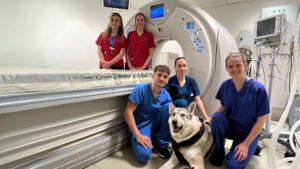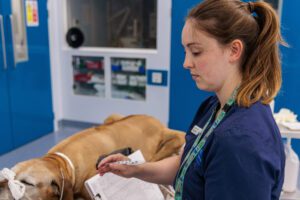Abstract
Objective
To determine the accuracy of needle arthroscopy (NA) for the diagnosis of medial meniscal tears in dogs with cranial cruciate ligament rupture (CCLR).
Study design
Prospective clinical trial.
Animals
Twenty-six client-owned dogs.
Methods
Dogs with CCLR and scheduled to undergo tibial plateau leveling osteotomy were recruited for the study. Needle arthroscopy was performed by an experienced surgeon; the same dog subsequently underwent standard arthroscopy (SA) by another experienced surgeon who was blinded to the NA findings. The SA arthroscopy findings were used as the gold standard. Arthroscopy time, visibility of the menisci, ability to probe the menisci, and the presence of meniscal tears were recorded for both arthroscopies. The degree of lameness before and after NA was subjectively quantified.
Results
The sensitivity and specificity to diagnose medial meniscal tears with NA was 95% and 100%, respectively. Visibility of the menisci was lower (P < .01), probing of the lateral meniscus was harder (P = .0017), and procedure time was shorter (P = .073) with NA when compared to SA. The lameness scores did not differ before and after NA (P = .25).
Conclusion
Needle arthroscopy could be performed rapidly with low morbidity, and had high accuracy for detecting medial meniscal tears in dogs with CCLR.
Clinical significance
Needle arthroscopy is a promising minimally invasive technique for diagnosing medial meniscal tears in dogs with CCLR.
1 minute read
In this paper











